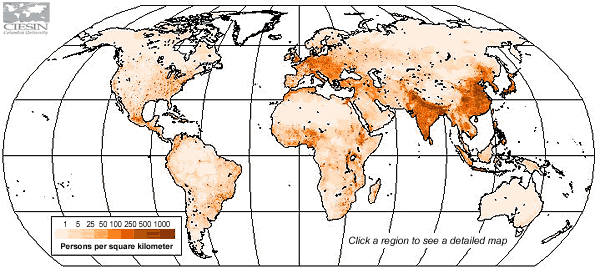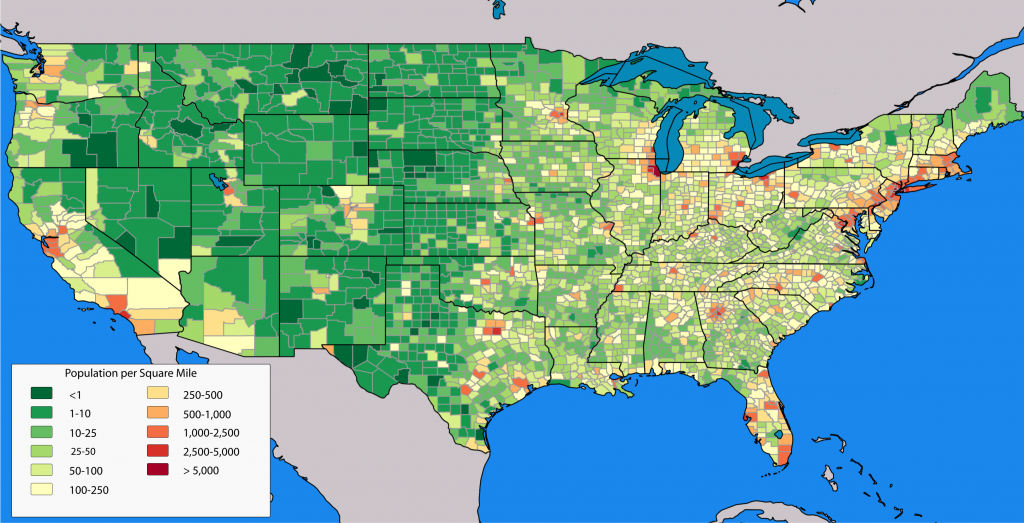The Term Population Density Describes the
Click card to see definition. The term population density describes the number of individuals per unit area a population will remain at a constant size when emigration equals immigration and births equal deaths the top of the S in the s-shaped curve indicates that the population has reached its carrying capacity populations generally grow in size over time true rapid population growth of the j-shaped.

What Is Population Density Internet Geography
Tap card to see definition.
. What is population density. According to the algorithm that drives this website the top 5 adjectives for population density are. The density of the population of a particular area is determined by the geographical features such as the shape and the height of the land available resources climate etc.
Population density is relation between the number of individuals of the population and area or volume they inhabit. Population density is the measurement of how many people there are in. The number of people living in each unit of area such as a square mile This part of the country has a high population density.
Population density Population density describes the number of people living in a given area usually a km². Besides the skyscrapers the Broadway shows and the plethora of yummy food choices one of the most amazing things to me about New York City is the massive waves of people. Learn vocabulary terms and more with flashcards games and other study tools.
Total Population Total land area. The graph below shows the relationship between population density and petroleum use in selected cities. Population 316 million in 2013 by the total US.
Click again to see term. Body size of different species. It is a quantity of type number density.
To describe the relationship between population density and petroleum use shown in the graph provided. In the US population density is typically expressed as the number of people per square mile of land area. Start studying Population Density.
Number of populations per unit area. Tap again to see term. It provides a better understanding of the spatial distribution of the population in relation to land.
Population density is the number of individuals that live in a unit area in a specified time. Definition of population density. Describes the number of individual organisms present in a given population at given time Population density describes the number of individuals within a population in a certain area.
Biology questions and answers. Value is calculated by dividing the total US. The number of individuals living within that specific location determines the population density or the number of individuals divided by the size of the area.
Crowded or uncrowded depending how big the population density. What is Population distribution. An equation that summarizes the amount of growth or decline in a population within a country during a particular time period taking into account both natural increase and net migration.
Number of individuals per unit area. Population size is the absolute number of individuals in the population while density takes into account the area that the population inhabits. Population density is a measurement of population per unit area or exceptionally unit volume.
Land area 35 million square miles. In simple terms population density refers to the number of people living in an area per square kilometre. Population density is calculated as the number of persons per unit area or per square kilometre.
Average nonwhite nonwhite over-all minimum and aboriginal. This phenomenon has occurred. In a broad sense this.
Term overpopulation is used where the number of people exceeds the carrying capacity of an area while the term under population is where the number of people is below the carrying capacity of an area. Population density can be used to describe the location growth and migration of many organisms. Often given in terms of arable land.
Number of species per unit area. Population density allows for broad comparison of settlement intensity across geographic areas. There are 23 other words to describe population density listed above.
For instance in 2001 human population density of United States in accordance with the World Bank was 2971 citizens per square kilometer and China had a population density of 13541 humans for each square kilometer. The term population density describes the Select one. The term urban sprawl describes the expansion of cities into rural areas.
Population living in urban areas expressed as a percentage of the total population. It is frequently applied to living organisms most of the time to humans. View Test Prep - Chapters 19-20 Quizdocx from BSC 1005C at St.
The study of human populations including their temporal and spatial dynamics. The correct number of organisms making up a population to utilize the resources available is. Expressed as the number of people per unit of land area.
Chapters 19 and 20 Quiz The term population density describes the. As an example the population density of China is 144 people per square km in 2012. The density of population is expressed as the average number of people living in one square kilometre.
In the case of humans population density is often discussed in relation to urbanization immigration and. Population density is a measure of the number of organisms that make up a population in a defined area. Other times in terms of average number of persons per household or per room.
It is a key geographical term. What 2 adjectives describe population density.
Difference Between Population Density And Population Distribution Pediaa Com
6 17 Population Size Density And Distribution Biology Libretexts

Population Density Ap Human Geography Crash Course Albert Io
No comments for "The Term Population Density Describes the"
Post a Comment